From ancient times, Celtic mythology has captivated the imaginations of people across the world with its rich tapestry of gods, goddesses, heroes, and magical beings. These mythical characters are steeped in tradition and carry deep significance within Celtic culture. Each character holds a unique role, representing different aspects of life, nature, and the supernatural. In this article, we will explore the major characters in Celtic mythology and delve into the depths of their stories and their profound impact on Celtic folklore. Join us on a journey through the realms of the Tuatha Dé Danann, the Fomorians, the Ulster Cycle, the Fenian Cycle, and the mysterious Otherworldly Beings, as we unearth the secrets and significance of these enchanting figures.
Contents
- The Tuatha Dé Danann
- The Fomorians
- The Ulster Cycle
- The Fenian Cycle
- The Otherworldly Beings
- Conclusion
-
Frequently Asked Questions
- What is Celtic mythology?
- Who were the Tuatha Dé Danann?
- What is the significance of the Tuatha Dé Danann?
- Who were the Fomorians?
- Who were the major characters in the Ulster Cycle?
- Who were the major characters in the Fenian Cycle?
- Who were the otherworldly beings in Celtic mythology?
- What are some key themes in Celtic mythology?
- How did Celtic mythology influence Irish culture?
- Is Celtic mythology still celebrated today?
- References
-
Frequently Asked Questions
- What is Celtic mythology?
- Who were the Tuatha Dé Danann?
- What role did Dagda play in Celtic mythology?
- Who was Morrigan and what was her significance?
- What were the skills associated with Lugh?
- Who were the Fomorians?
- What was Balor known for?
- Who was Cú Chulainn and why was he important?
- Who was Medb and what was her role?
- Who was Fionn mac Cumhaill and what did he lead?
- References
- Read More
The Tuatha Dé Danann
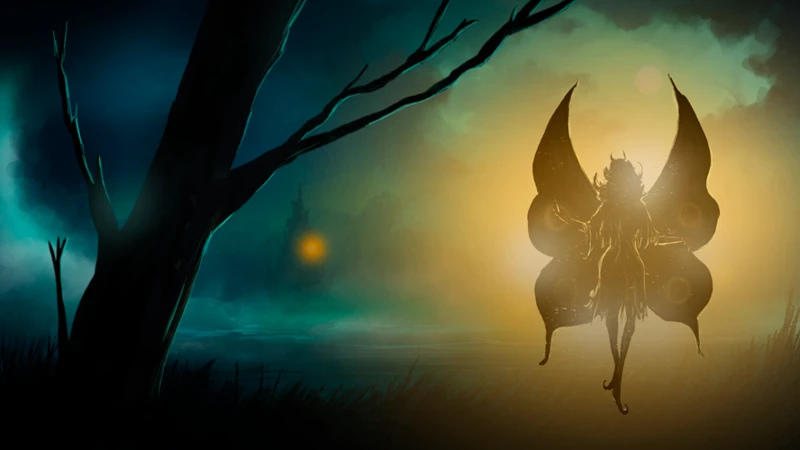
The Tuatha Dé Danann, often referred to as the Children of the Goddess Danu, are a prominent group of divine beings in Celtic mythology. They were believed to be the original inhabitants of Ireland, possessing extraordinary powers and wisdom. The Tuatha Dé Danann consisted of various deities, each with their own distinct roles and significance in Celtic folklore. One of the most prominent figures among them is the Dagda, also known as “The Good God” or “The Father of All”. He is revered as the wisest and most powerful of the Tuatha Dé Danann, embodying abundance, fertility, and the forces of creation. Another notable member is the Morrigan, the fierce Goddess of War, associated with sovereignty, battle, and fate. She embodies the duality of life and death, and her presence on the battlefield was believed to determine the outcome of conflicts. Lastly, we have Lugh, the Master of Skills, who is revered for his mastery in numerous arts and professions. Lugh was associated with light, knowledge, and the harvest, symbolizing the importance of skill and talent in Celtic society. The Tuatha Dé Danann played a crucial role in the mythological and cultural landscape of ancient Ireland, shaping the beliefs and traditions of its people.
Dagda – The Father of All
The Dagda, also known as “The Good God” or “The Father of All”, holds a central role among the Tuatha Dé Danann in Celtic mythology. He is revered as the wise and powerful deity who embodies abundance, fertility, and the forces of creation. The Dagda is often depicted as a robust figure with a large belly, symbolizing his associations with prosperity and the harvest. He wields a magical club called the “Lia Fáil” or “Staff of Life”, which has the power to both kill and resurrect. The Dagda’s cauldron, known as the “Coire Ansic”, never runs empty and possesses the ability to provide an endless supply of food and nourishment. His role as the father figure of the gods reflects his responsibility for the wellbeing of the Tuatha Dé Danann and the land itself. The Dagda also holds the keys to the spiritual realm and the afterlife, exemplified by his ownership of a magical harp named “Uaithne”. This harp can control the seasons and even sway the emotions of others when played. The Dagda’s significance within Celtic mythology is further emphasized by his association with important sites such as the sacred Hill of Tara. The Dagda acts as a vital symbol of power, wisdom, generosity, and the richness of life in Celtic mythology, resonating with the profound connection between nature and divinity.
Morrigan – The Goddess of War
The Morrigan is a formidable figure in Celtic mythology, known as the Goddess of War and Battle. She embodies the fierce and unpredictable aspects of war, representing both destruction and transformation. The name “Morrigan” translates to “Great Queen” or “Phantom Queen,” emphasizing her majestic and mysterious nature. Associated with sovereignty and fate, she often appears as a crow or raven, symbolizing her connection with the battlefield and the realm of the dead. With her ability to shape-shift, the Morrigan could take on the form of a young maiden, a seductive woman, or a hag, displaying her immense power and versatility. She is also closely linked to sovereignty, as it was believed that the rightful king of Ireland must receive her blessing. The Morrigan’s role in Celtic mythology is multi-faceted and complex. She is known to intervene in battles, inspiring warriors and influencing the outcome of conflicts. Warriors would seek her favor before going into battle, hoping for her protection and guidance. However, the Morrigan is not solely associated with war and death. She is also connected to regeneration and rebirth, symbolizing the cyclical nature of life and the changes that come after destruction. As a divine figure, the Morrigan exemplifies the complexities and contradictions of human existence, reminding us of the eternal dance between life and death, creation and destruction. Her presence in Celtic mythology highlights the significance of war and the deep reverence ancient Celtic societies had for the forces of battle and sovereignty.
Lugh – The Master of Skills
Lugh, known as the Master of Skills, is a revered figure in Celtic mythology. He is considered a deity of many talents and abilities, representing the essence of mastery and expertise. Lugh is often depicted as a warrior, poet, craftsman, and a skilled magician. His diverse skills encompassed a wide range of domains, making him a prominent and respected figure among the Tuatha Dé Danann. Lugh’s association with light and the sun symbolizes his connection to illumination and knowledge. He was believed to possess an understanding of various arts, sciences, and crafts, including swordsmanship, spear throwing, healing, and music. Legend has it that Lugh introduced the system of agricultural farming to the people of Ireland, showcasing his agricultural expertise and influence over the harvest. Additionally, Lugh’s name is etymologically connected to the word for “oath,” emphasizing his role as a divine promise-keeper and protector of truth. In Celtic mythology, Lugh’s skills played a vital role in the prosperity and advancement of the Tuatha Dé Danann, making him a central and deeply significant character in Celtic folklore.
The Fomorians
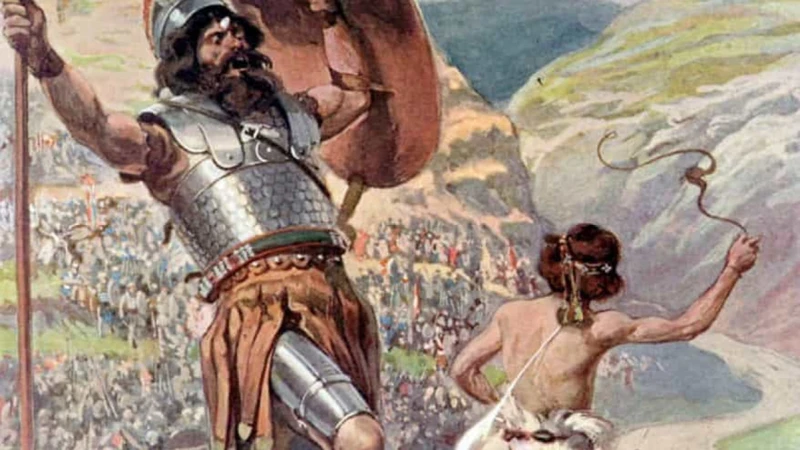
In Celtic mythology, the Fomorians are a mysterious and formidable race of supernatural beings. They are often depicted as ancient sea-dwelling creatures who wage war against the Tuatha Dé Danann, creating a stark contrast between chaos and order. The most notorious figure among the Fomorians is Balor, the Evil King. Balor is known for his monstrous appearance, with one eye that has the power to kill anyone it gazes upon. He represents darkness, destruction, and tyranny. Another significant Fomorian deity is Tethra, the Sea God, associated with the vast depths of the ocean and the forces of nature. While the Fomorians are often portrayed as malevolent beings, their existence serves as a reminder of the constant struggle between good and evil in Celtic mythology. Their encounters with the Tuatha Dé Danann shape the mythological landscape, showcasing the triumph of light over darkness and the eternal battle for balance.
Balor – The Evil King
Balor, known as the Evil King, is a prominent character in Celtic mythology. He is a towering and formidable figure, often depicted with a single, deadly eye that has the power to wreak destruction. Balor is considered one of the leaders of the Fomorians, a race of malevolent supernatural beings in Celtic folklore. He wields immense power and possesses a fierce and tyrannical nature. Legend has it that should Balor open his eye fully, it unleashes a devastating beam that can obliterate anything in its path. His eye represents his malevolence and destructive force, striking fear into the hearts of those who dare to oppose him.
Balor’s story is intertwined with the tale of Lugh, a hero from the Tuatha Dé Danann. Prophecy foretold that Balor would be slain by his own grandson, so he imprisoned his daughter, Ethlinn, in a crystal tower to prevent her from having any children. However, Lugh managed to find his way to Ethlinn, and despite Balor’s efforts to keep them apart, Lugh was eventually able to confront his tyrannical grandfather.
In the climactic battle between Lugh and Balor, the Evil King unleashed his devastating eye, intending to annihilate Lugh. But with remarkable skill and precision, Lugh shot a slingstone that struck Balor’s eye, shattering it and causing the destructive beam to turn inward, obliterating Balor himself.
The tale of Balor serves as a cautionary reminder of the dangers of unchecked power and the consequences of embracing malicious intentions. Despite his malevolence, Balor’s defeat by his own grandson highlights the power of destiny and the triumph of good over evil in Celtic mythology. This epic battle against the Evil King showcases the resilience and heroism of the Celtic heroes who sought to protect their people from the forces of darkness.
For more mythical tales from around the world, check out the Monkey King in Chinese literature, a legendary character renowned for his mischievous nature and incredible powers.
Tethra – The Sea God
Tethra, known as the Sea God, holds a significant place in Celtic mythology as the ruler of the depths and the guardian of the seas. This powerful deity is often depicted as a shapeshifter, capable of transforming into various sea creatures and controlling the vast waters. Tethra’s domain extends beyond the physical realm and encompasses the spiritual and mystical aspects of the sea. Legends speak of Tethra’s ability to summon storms and create treacherous waves, challenging sailors who dared to venture into his realm. As the ruler of the ocean, Tethra was both feared and respected by the ancient Celts, who relied on the sea for sustenance and trade. Worship of Tethra was deeply rooted in coastal communities, where rituals and offerings were made to appease the Sea God and seek his protection. The mythology surrounding Tethra also intertwines with tales of underwater realms and mythical creatures, further emphasizing his connection to the mysteries and depths of the sea. This divine figure serves as a reminder of the immense power and unpredictability of the ocean, commanding both reverence and caution from those who encounter its waters. Whether portrayed as a benevolent guardian or a formidable force, Tethra remains an integral part of Celtic mythology, embodying the unyielding and enigmatic nature of the sea.
The Ulster Cycle
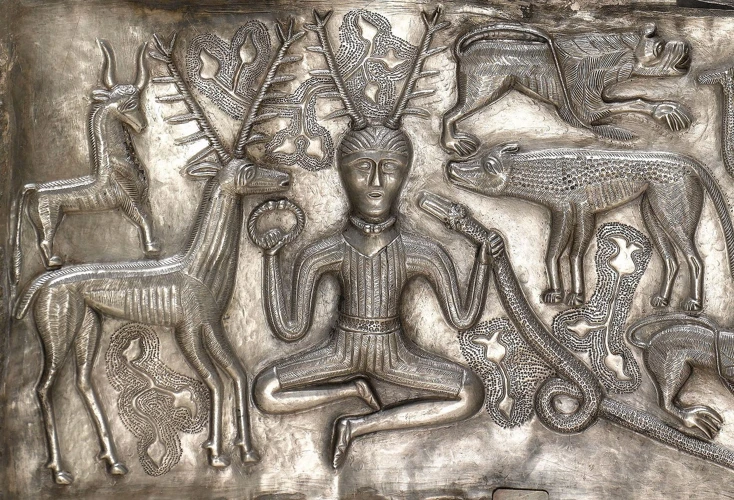
The Ulster Cycle, a collection of interconnected tales and sagas, is one of the most renowned cycles in Celtic mythology. It revolves around the heroes of the ancient province of Ulster, showcasing their valor, honor, and the challenges they face. At the center of the Ulster Cycle is the legendary figure of Cú Chulainn, a young warrior whose tales of bravery and tragic fate have captivated audiences for centuries. Cú Chulainn possessed incredible strength and skill, but his life was marked by turmoil and inner conflicts. Another notable character is Medb, the formidable Queen of Connacht. Known for her cunning and ambition, Medb is often portrayed as a fierce warrior queen who stops at nothing to achieve her desires. Fergus mac Róich, an exiled king, is also a significant presence in the Ulster Cycle. Despite his troubled past, Fergus is depicted as a noble and honorable figure, torn between loyalty and personal integrity. The tales of the Ulster Cycle are filled with epic battles, tragic love stories, and profound moral dilemmas, painting a vivid picture of the heroes and heroines of ancient Ireland.
Cú Chulainn – The Hero of Ulster
Cú Chulainn, also known as Setanta, is a legendary figure and the hero of Ulster in Celtic mythology. Born to the mortal woman Deichtine and the god Lugh, Cú Chulainn is marked from birth with incredible strength and exceptional skills. His most renowned feat is the single-handed defense of Ulster against the forces of Queen Medb during the epic Táin Bó Cúailnge, also known as the Cattle Raid of Cooley. Cú Chulainn’s valor and unmatched combat prowess made him a formidable warrior on the battlefield. He possessed the ability to undergo a battle frenzy known as the ríastrad, where his strength and ferocity were heightened to supernatural levels. Cú Chulainn’s iconic weapon was the Gáe Bulg, a fearsome spear said to inflict deadly wounds that were nearly impossible to heal. Despite his warrior nature, Cú Chulainn was also depicted as having a compassionate and loyal side, as seen in his relationships with his closest friend, Ferdiad, and his lover, Emer. He is often remembered for his tragic demise in which, even mortally wounded, he tied himself to a standing stone in order to die on his feet, facing his enemies with unwavering bravery. Cú Chulainn’s story serves as a testament to the enduring spirit of heroism and sacrifice in Celtic mythology.
Medb – The Queen of Connacht
Medb, also known as Maeve, was a formidable figure in Celtic mythology as the Queen of Connacht. She was a complex and influential character renowned for her strength, ambition, and prowess in battle. Medb was driven by a deep desire for power and wealth, which led her to become a key player in the famous epic tale of the Táin Bó Cúailnge, or The Cattle Raid of Cooley. In this epic, Medb’s overwhelming desire to possess the prized bull of Ulster, Donn Cuailnge, sparked a conflict between Connacht and Ulster. Medb’s determination and leadership skills were evident as she fearlessly led her army into battle, proving herself to be a formidable warrior and strategist. She was often depicted as a cunning and resourceful queen, willing to go to great lengths to achieve her goals. Medb’s story reflects the themes of power, warfare, and gender equality in Celtic mythology, and she stands as a symbol of female strength and authority. Her character has left an indelible mark on Irish folklore and continues to inspire discussions about leadership, ambition, and the role of women in society.
Fergus mac Róich – The Exiled King
Fergus mac Róich holds a significant place in Celtic mythology as the Exiled King. He was a central character in the Ulster Cycle, a collection of legends and sagas from ancient Ireland. Fergus was known for his bravery, wisdom, and skill in battle, making him a respected figure among the warriors of Ulster. However, his story took a tragic turn when he was forced into exile due to a political conflict. Despite his exile, Fergus maintained his integrity and played a crucial role in many pivotal events. One such incident was the famous Táin Bó Cúailnge, or the Cattle Raid of Cooley, where Fergus served as a mediator between the rival parties. He displayed his diplomatic skills and proved to be a wise and fair leader. Fergus was also known for his unrequited love for the queen Medb of Connacht, which further complicated his position in the cycle. His loyalty to his friends and his moral compass in the face of adversity made Fergus mac Róich an intriguing character in Celtic mythology, symbolizing the complexities of honor, loyalty, and the struggle for justice.
The Fenian Cycle
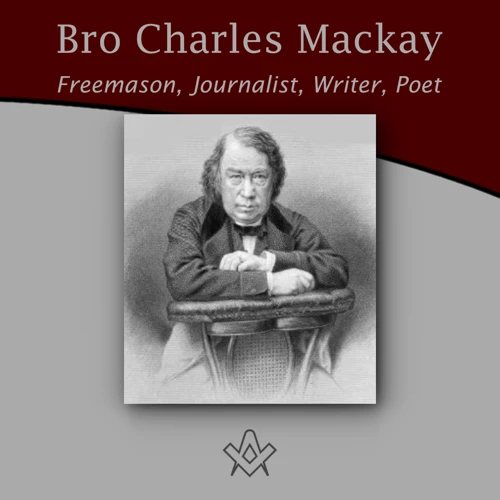
The Fenian Cycle is a collection of heroic tales and legends that revolve around the exploits of the Fenians, a band of warrior-heroes in Celtic mythology. At the heart of this cycle is the figure of Fionn mac Cumhaill, the renowned leader of the Fenians. Fionn was known for his exceptional bravery, wisdom, and skill in battle, making him a beloved and legendary character. He was often accompanied by his loyal followers and friends, including the poet and warrior Oisín. Together, they embarked on daring quests, fought fierce battles, and encountered supernatural beings and creatures. The stories within the Fenian Cycle highlight the values of heroism, honor, and loyalty, while also delving into themes of nature, mysticism, and the complexities of human existence. It is through the adventures of Fionn and his companions that the Fenian Cycle captures the essence of the Celtic warrior spirit and preserves a rich tapestry of mythical tales that continue to enthrall audiences to this day.
Fionn mac Cumhaill – The Leader of the Fenians
Fionn mac Cumhaill, also known as Finn McCool, is an iconic figure in Celtic mythology and the legendary leader of the Fenians, a band of warrior heroes. Born to Cumhall, the head of the Fianna, Fionn inherited his father’s leadership and legendary strength. According to myth, Fionn acquired his wisdom and power through a magical encounter with the salmon of knowledge. It is said that Fionn gained all the knowledge of the world by accidentally tasting the salmon’s flesh. This extraordinary wisdom made him a wise and respected leader, guiding the Fenians through countless adventures and battles.
Fionn mac Cumhaill’s stories are filled with bravery, cunning, and loyalty. One of the most famous tales involving Fionn is the pursuit of the legendary boar, the Twrch Trwyth. Fionn and his warriors embarked on a heroic quest to capture the enchanted boar, facing numerous challenges and confrontations along the way.
Another prominent story is the tale of Diarmuid and Gráinne, where Fionn’s pursuit of Diarmuid’s love interest, Gráinne, led to a series of tragic events. Fionn’s complex personality is highlighted in this story, as he is depicted as both a heroic leader and a jealous rival, showcasing his deeply human qualities.
Despite his great power, Fionn is also known for his compassion and generosity. He often helped those in need and acted as a protector of the innocent. Fionn’s sword, named Mac an Luin, was said to have the power to defeat any opponent, making him an invincible warrior.
Throughout Celtic mythology, Fionn mac Cumhaill stands out as a legendary figure, representing leadership, wisdom, and the eternal struggle between good and evil. His stories continue to be celebrated and passed down through generations, immortalizing him as a beloved hero in Celtic folklore.
Oisín – The Poet and Warrior
Oisín, known as the Poet and Warrior, is a fascinating character in Celtic mythology. He was the son of the legendary hero Fionn mac Cumhaill, and his mother was Sadhbh, an enchantress who was transformed into a deer. Oisín inherited his father’s bravery and his mother’s connection with nature and magic. A skilled poet, Oisín was gifted with the ability to compose beautiful verses that could captivate the hearts of those who listened. He was also a formidable warrior, renowned for his bravery and skill with weapons.
One of the most well-known stories involving Oisín is the tale of his encounter with Niamh Chinn Óir, a fairy princess from the Otherworld. Overwhelmed by love, Oisín decided to accompany Niamh to her magical realm, leaving behind his family and the mortal world. In the Otherworld, Oisín experienced joy and bliss, but after what seemed like a short time, he became homesick and yearned to see his homeland once again.
Niamh gave Oisín a magical horse, warning him that if he were to dismount, he would never be able to return. Oisín rode back to Ireland, eager to reunite with his family and friends. However, upon his arrival, he discovered that centuries had passed in his absence, and the land he once knew had changed dramatically. Oisín’s companions were long gone, and the heroic tales of the Fenian Cycle had become legends of the past.
Heartbroken and filled with sorrow, Oisín realized that he could never truly belong to the present world. Eventually, he encountered Saint Patrick, who introduced Christianity to Ireland. Oisín shared his stories and legends with the saint, preserving the rich oral tradition of Celtic mythology.
The story of Oisín highlights the themes of time, love, and the inevitability of change. Oisín’s longing for the past and his inability to find true belonging in the present serve as a metaphor for the fleeting nature of life and the importance of cherishing the moments we have. Oisín’s role as both a poet and a warrior reflects the Celtic belief in the intertwining of art, bravery, and spirituality.
The tale of Oisín is a reminder of the power of storytelling and its ability to transcend time and connect us to our collective past. Through his poems and legends, Oisín continues to inspire and captivate generations, ensuring that the legacy of the Celtic culture he embodies lives on.
The Otherworldly Beings
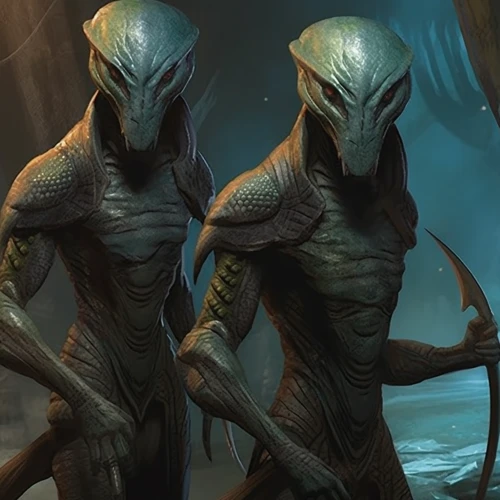
The Otherworldly Beings in Celtic mythology are a diverse collection of mystical creatures that inhabit realms beyond the mortal world. These beings are often depicted as otherworldly and possess extraordinary powers, adding an air of enchantment to Celtic folklore. One notable figure among them is Cernunnos, the Horned God. Cernunnos represents the untamed forces of nature and is often associated with fertility, abundance, and the cycles of life and death. His antlered head symbolizes his connection to the animal kingdom and the wild. Another group of Otherworldly Beings are the legendary heroes known as the Mabinogion. These heroes, such as Pryderi and Culhwch, embark on quests filled with adventure and encounter magical beings along the way. Their stories are interwoven with themes of heroism, love, and the challenges faced by mortal beings in the face of supernatural forces. The Otherworldly Beings in Celtic mythology provide a glimpse into the realm of the mysterious and the awe-inspiring, reminding us of the captivating nature of mythology and the enduring allure of the unknown. For more on the impact of harmonious planetary alignments on spirituality, click here.
Cernunnos – The Horned God
Cernunnos, also known as the Horned God, is a significant figure in Celtic mythology. Depicted with antlers or horns on his head, Cernunnos represents the connection between nature and spirituality. He is often associated with the abundance of the natural world, the cycle of life and death, and fertility. Cernunnos symbolizes the untamed and wild aspects of nature, embodying its raw power and primal energy. In Celtic culture, he is considered the guardian of the forest and its creatures, emphasizing the importance of respecting and living in harmony with the natural world. Cernunnos is often depicted in art and carvings found throughout Europe, particularly on ancient stone pillars and coins. His image represents the vitality and vitality of nature, acting as a reminder of the sacredness and interconnectedness of all living beings. The Horned God plays a significant role in Celtic rituals and ceremonies, where he is honored as a deity of strength, virility, and the eternal cycle of life. Whether worshipped as a god of fertility or as a symbol of the wild forces of nature, Cernunnos remains an important and mysterious figure in Celtic mythology.
Mabinogion – The Legendary Heroes
The Mabinogion is a collection of Welsh tales that tell the stories of legendary heroes and extraordinary beings. These captivating narratives have been passed down through generations, reflecting the rich cultural heritage of Wales. Within the Mabinogion, we encounter a diverse cast of characters, each with their own unique qualities and roles. These legendary heroes, such as Pryderi, Math fab Mathonwy, and Lleu Llaw Gyffes, embark on epic quests, face formidable challenges, and exhibit exceptional courage and strength. One of the most prominent figures in the Mabinogion is the brave Bran the Blessed, a giant and king of Britain, who possesses mystical properties and wisdom. Another notable hero is Culhwch, whose quest for a bride leads him on a series of fantastical adventures, demonstrating his determination and resourcefulness. These tales are not only entertaining but also serve as a means to impart moral lessons and teachings to the audience. The Mabinogion heroes continue to inspire and captivate readers with their extraordinary deeds and enduring significance in Welsh folklore and literature.
Conclusion
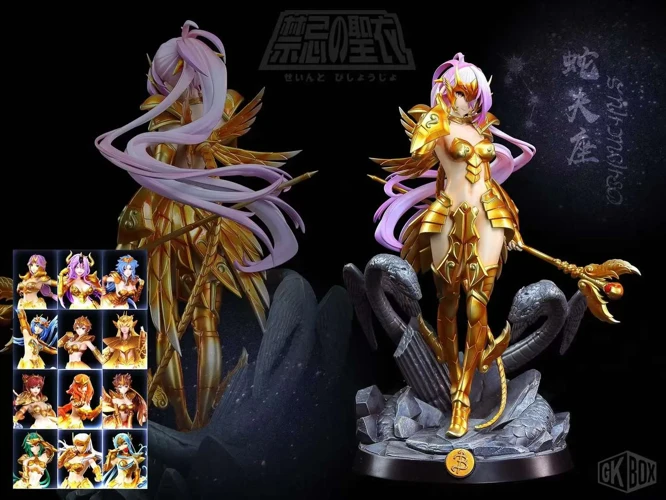
The rich and vibrant world of Celtic mythology is a testament to the depth of human imagination and the power of storytelling. Throughout this article, we’ve explored the major characters in Celtic mythology and their significance. From the powerful Tuatha Dé Danann to the formidable Fomorians, the heroic figures of the Ulster Cycle, the legendary Fenian warriors, and the enigmatic otherworldly beings, each character has left an indelible mark on Celtic folklore. These mythological figures served as symbols of various aspects of life, nature, and the supernatural, reflecting the beliefs and values of the Celtic people. The stories and legends surrounding these characters not only entertained and fascinated audiences but also held deeper meanings and teachings. They provided a way for the Celts to make sense of the world around them, explore the complexities of human existence, and transmit cultural and moral lessons from generation to generation. As we conclude this exploration of Celtic mythology, let us appreciate the enduring legacy of these characters and their role in shaping the cultural identity of the Celtic people. Their stories continue to inspire and captivate audiences around the world, ensuring that the magic and wonder of Celtic mythology will endure for generations to come.
Frequently Asked Questions

What is Celtic mythology?
Celtic mythology refers to the myths, legends, and folklore associated with the ancient Celtic societies of Ireland, Scotland, Wales, and other regions of Europe. It encompasses a rich collection of stories about gods, goddesses, heroes, and magical creatures.
Who were the Tuatha Dé Danann?
The Tuatha Dé Danann were divine beings in Celtic mythology, considered to be the original inhabitants of Ireland. They were a group of powerful deities associated with various aspects of life, nature, and the supernatural.
What is the significance of the Tuatha Dé Danann?
The Tuatha Dé Danann played a significant role in shaping Celtic mythology and culture. They were believed to possess immense knowledge, wisdom, and magical abilities. Their stories and teachings reflected the values and beliefs of the Celtic people.
Who were the Fomorians?
The Fomorians were a group of mythological beings in Celtic folklore who were associated with chaos, darkness, and the sea. They were often portrayed as fierce and monstrous creatures and were considered adversaries of the Tuatha Dé Danann.
Who were the major characters in the Ulster Cycle?
The Ulster Cycle is a collection of stories from Irish mythology, and it features several significant characters. Some of the main figures include Cú Chulainn, a heroic warrior of exceptional skill; Medb, the powerful Queen of Connacht; and Fergus mac Róich, an exiled king with a complex role in the tales.
Who were the major characters in the Fenian Cycle?
The Fenian Cycle revolves around the stories of Fionn mac Cumhaill, the leader of the Fenians and a renowned warrior and hunter. Another notable character is Oisín, Fionn’s son, who was known for his poetic talents and his adventures in the mythical land of Tír na nÓg.
Who were the otherworldly beings in Celtic mythology?
The otherworldly beings in Celtic mythology were a diverse group of magical creatures, spirits, and gods/goddesses associated with the Otherworld or the supernatural realm. One notable figure is Cernunnos, the Horned God associated with nature, fertility, and the wild. The Mabinogion also features a collection of legendary heroes and heroines from Welsh mythology.
What are some key themes in Celtic mythology?
Some key themes in Celtic mythology include the cycles of life and death, the power of nature and the elements, the importance of honor and bravery, the connection between humans and the divine, as well as the intertwining of history, legends, and the supernatural.
How did Celtic mythology influence Irish culture?
Celtic mythology had a profound impact on Irish culture, shaping religious beliefs, artistic expressions, and social customs. It provided a framework for understanding the world and the interconnectedness of all things, while also inspiring music, art, and literature.
Is Celtic mythology still celebrated today?
Yes, elements of Celtic mythology are still celebrated and revered in modern times. Festivals, rituals, and traditions rooted in ancient Celtic practices continue to take place, particularly in Ireland, Scotland, Wales, and other regions with Celtic heritage.
References
Frequently Asked Questions

What is Celtic mythology?
Celtic mythology refers to the collection of myths, legends, and folklore from the Celtic cultures of Ireland, Scotland, Wales, and other Celtic regions. It encompasses a wide range of legendary characters, gods, goddesses, and epic tales.
Who were the Tuatha Dé Danann?
The Tuatha Dé Danann were a powerful race of divine beings in Celtic mythology. They were considered to be the ancient gods and goddesses of the Celtic people. They were skilled in magic and had a deep connection to nature.
What role did Dagda play in Celtic mythology?
Dagda was a central figure in Celtic mythology and was often referred to as the “Father of All.” He was a powerful god associated with abundance, fertility, and agriculture. He possessed a magical cauldron that had the power to provide an endless supply of food.
Who was Morrigan and what was her significance?
Morrigan was a goddess of war in Celtic mythology. She was known for her ability to shape-shift into the form of a crow and often appeared on the battlefield to inspire warriors. She represented both the destructive and protective aspects of war.
What were the skills associated with Lugh?
Lugh was a prominent Celtic deity who was revered for his mastery of many skills. He was considered the master of arts, crafts, music, and prophecy. He was also known as a great warrior and was associated with the sun.
Who were the Fomorians?
The Fomorians were a race of supernatural beings in Celtic mythology. They were often depicted as monstrous and hostile creatures associated with chaos and the sea. They were seen as the adversaries of the Tuatha Dé Danann.
What was Balor known for?
Balor was an evil king and leader of the Fomorians. He was infamous for his fierce and destructive eye, which had the power to kill any living creature it looked upon. He played a significant role in battles against the Tuatha Dé Danann.
Who was Cú Chulainn and why was he important?
Cú Chulainn was a legendary hero of Ulster in Celtic mythology. He possessed extraordinary strength and skills in combat from a young age. He was known for his role in the Táin Bó Cúailnge (Cattle Raid of Cooley), a major epic in Irish mythology.
Who was Medb and what was her role?
Medb, also known as Queen Maeve, was the formidable queen of Connacht. She was a powerful and ambitious ruler and played a central role in the epic tales of the Ulster Cycle. She is particularly known for her role in the Táin Bó Cúailnge.
Who was Fionn mac Cumhaill and what did he lead?
Fionn mac Cumhaill, also known as Finn McCool, was the legendary leader of the Fenians in Celtic mythology. He was renowned for his wisdom, bravery, and hunting skills. He led a band of warriors known as the Fianna and was involved in numerous adventures and battles.
References
- 11 Major Celtic Gods And Goddesses (2023)
- Top gods and goddesses from Celtic mythology – Irish Central
- Characters You Should Know from Irish Folklore







